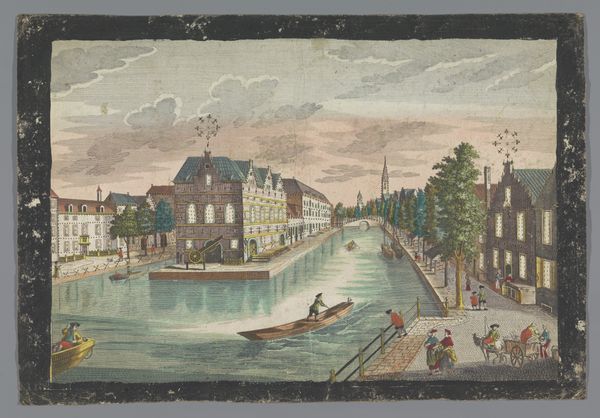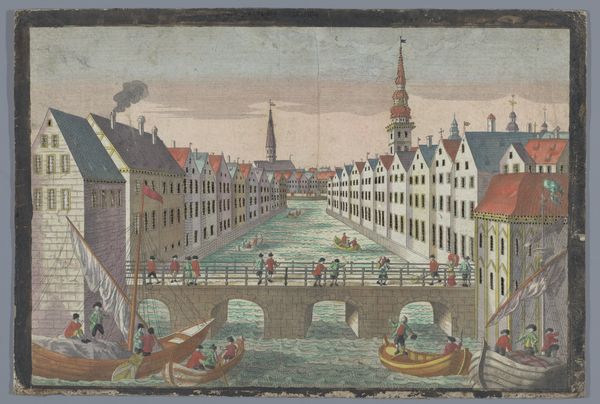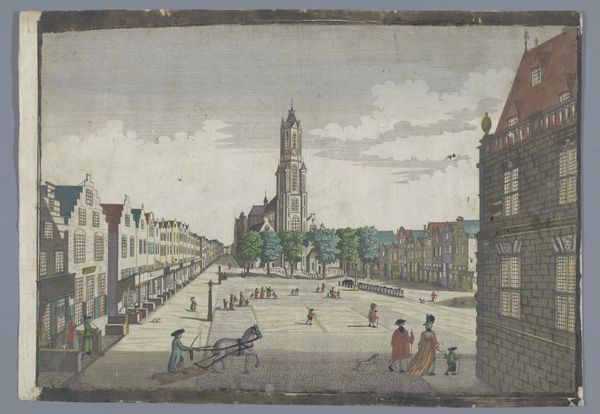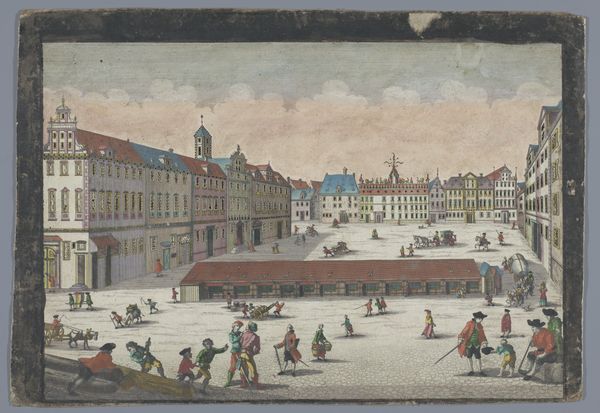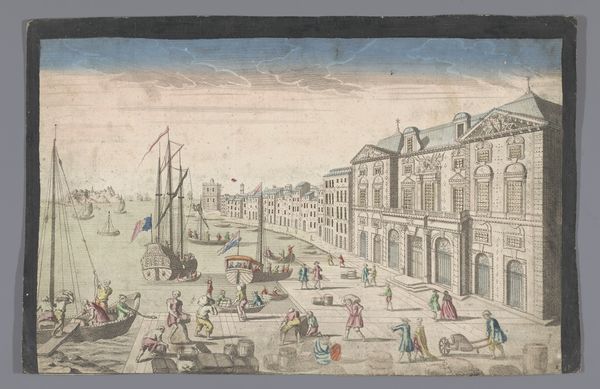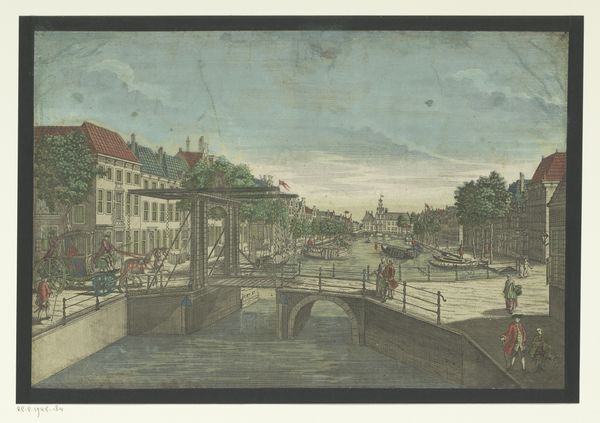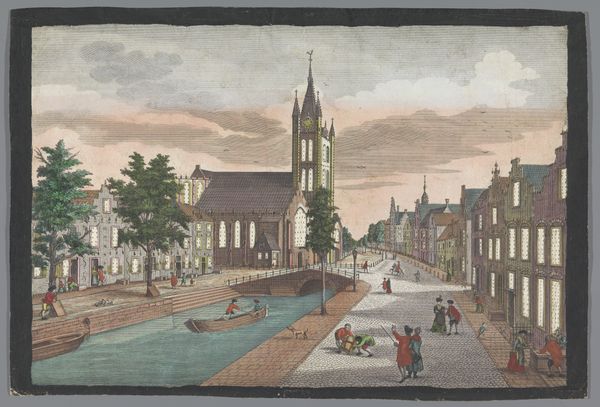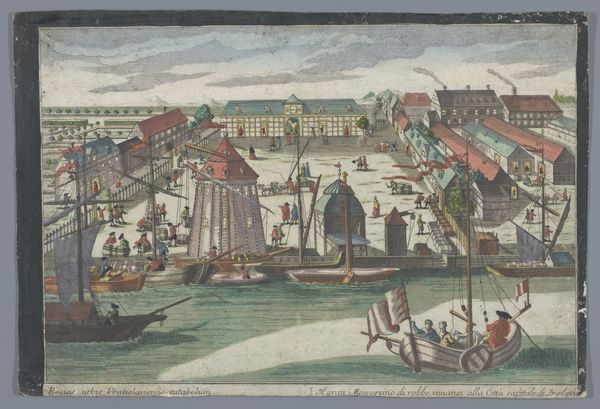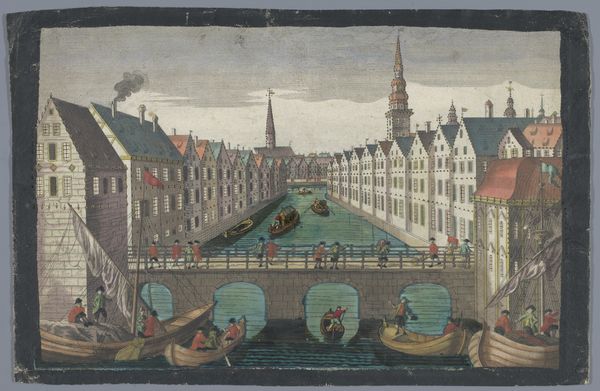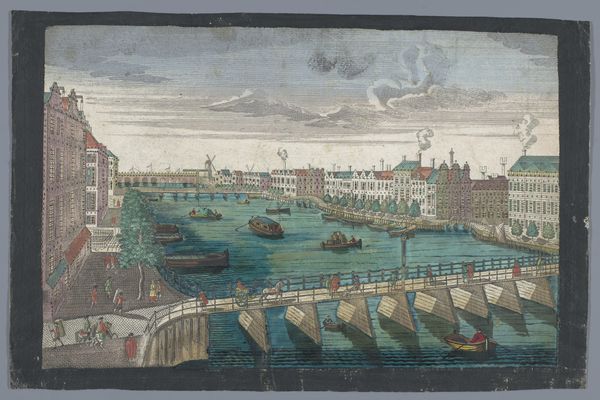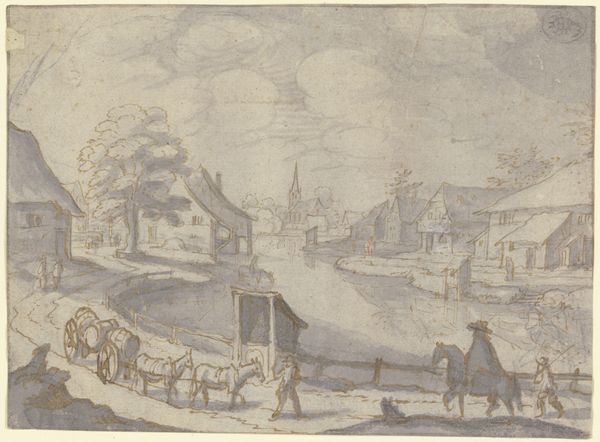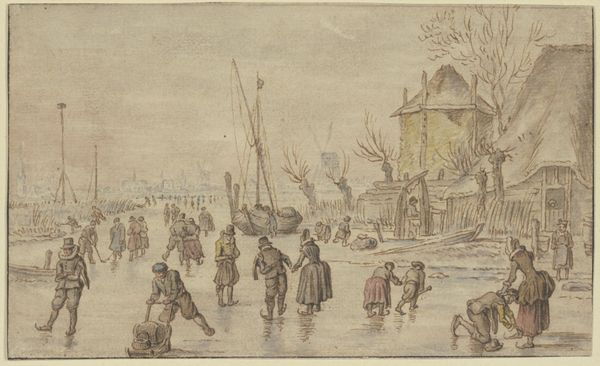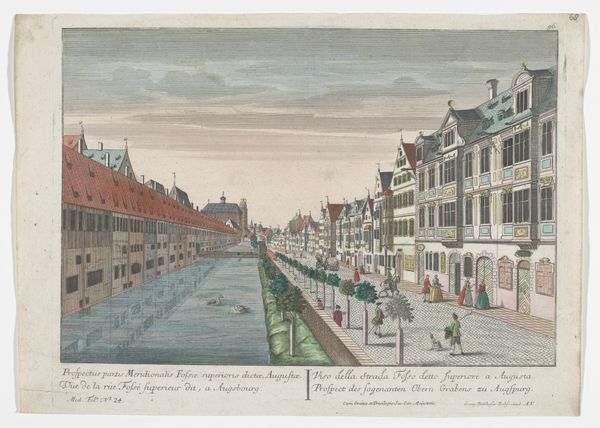
Gezicht op de Rotterdamse Poort en de Ketelpoort te Delft 1742 - 1801
0:00
0:00
Dimensions: height 305 mm, width 455 mm
Copyright: Rijks Museum: Open Domain
Editor: Here we have "View of the Rotterdam Gate and the Ketel Gate in Delft," a print created between 1742 and 1801. It's attributed to Georg Balthasar Probst and uses a mixed media of engraving and watercolors. I’m struck by the composition; it feels very balanced, almost staged. What do you see in this piece from a formal perspective? Curator: What strikes me first is the interplay between line and color. The artist employs crisp, precise lines, particularly in the architectural details, contrasting with the softer, more fluid application of watercolour washes. Notice how these washes define the sky and water, creating depth and atmospheric perspective. Editor: I see that! The sky almost seems to fade into the distance, unlike the more defined buildings. Is there a particular purpose to this contrast? Curator: Precisely. Observe the sharp angles of the buildings compared to the gentle curves of the arches and the human figures. Probst constructs a visual hierarchy, leading our eye from the immediate activity on the street towards the vanishing point within the architectural space. Note too how the artist modulates tone to distinguish various planar recessions. Editor: So, it's all carefully designed to guide the viewer. Does the limited palette play into this at all? Curator: Certainly. The restrained use of colour—mainly earth tones with subtle hints of red and blue—contributes to the print’s overall sense of harmony and balance. It also allows the details in the linework to become more prominent. Do you notice any specific shapes, patterns or elements recurring in the image? Editor: The rectangles! Windows, buildings… even the shapes in the square tiling contribute. It almost feels mathematical! I never noticed how much the lines draw my eyes through it all before. Curator: Exactly. It is through these considered artistic choices that Probst is able to construct the image, controlling the eye through geometric shapes and planes and an acute manipulation of media to achieve balance, harmony, and perspective. It is interesting to think of the architectural portrayal in that manner.
Comments
No comments
Be the first to comment and join the conversation on the ultimate creative platform.
